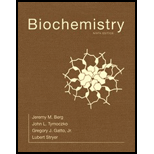
(a)
Interpretation:
The structure of D-Allose: Epimeric at C-3 should be determined.
Concept introduction:
Carbohydrates are a large group of organic compounds that are present in foods, living tissues. These include sugars, cellulose, and starch. Anomers are the glycosides or cyclic monosaccharides that are epimers. These are different from each other in the configuration of C-1 (aldoses) or at C-2 if (ketoses).
Answer to Problem 9P
The structure of D-Allose:
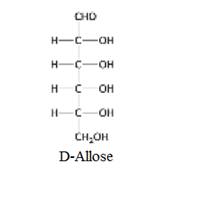
Explanation of Solution
When two sugars vary in their configuration around one carbon atom then those sugars are known as epimers of each other.
The structure of D-Allose: Epimeric at C-3 is given below:
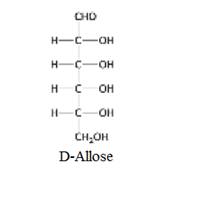
(b)
Interpretation:
The structure of D-Altrose: Isomeric at C-2 and C-3 should be determined.
Concept introduction:
Carbohydrates are a large group of organic compounds that are present in foods, living tissues. These include sugars, cellulose, and starch. These are comprised of hydrogen and oxygen in a similar ratio as in water (2:1). They are usually broken down to release the energy in the animal body. These are of three types: monosaccharides, disaccharides, and polysaccharides.
Answer to Problem 9P
The structure of D-Altrose:
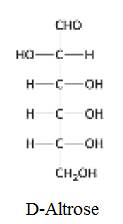
Explanation of Solution
Glucose is an aldose as it contains one
The structure of D-Altrose: Isomeric at C-2 and C-3 is given below:
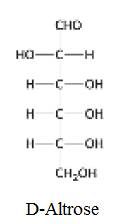
(c)
Interpretation:
The structure of D-Mannose: Eplmeric at C-2 should be determined.
Concept introduction:
Carbohydrates are a large group of organic compounds that are present in foods, living tissues. These include sugars, cellulose, and starch. These are comprised of hydrogen and oxygen in a similar ratio as in water (2:1). They are usually broken down to release the energy in the animal body. These are of three types: monosaccharides, disaccharides, and polysaccharides.
Answer to Problem 9P
The structure of D-Mannose:
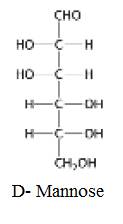
Explanation of Solution
Anomers are the glycosides or cyclic monosaccharides that are epimers. These are different from each other in the configuration of C-1 (aldoses) or at C-2 if (ketoses). In a pair of anomers, the anomer containing the alkoxy group or hydroxy group is pointing up on the anomeric carbon is known as the ß-anomer.
The structure of D-Mannose: Eplmeric at C-2 is given below:
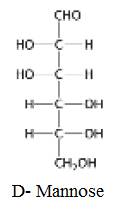
(d)
Interpretation:
The structure of D- Gulose: Isomeric at C-3 and C-4
should be determined.
Concept introduction:
Carbohydrates are a large group of organic compounds that are present in foods, living tissues. These include sugars, cellulose, and starch. These are comprised of hydrogen and oxygen in a similar ratio as in water (2:1). They are usually broken down to release the energy in the animal body. These are of three types: monosaccharides, disaccharides, and polysaccharides.
Answer to Problem 9P
The structure of D- Gulose:
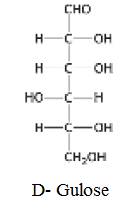
Explanation of Solution
Glucose is an aldose as it contains one aldehyde group per molecule in its acyclic form. Mannose is a sugar of the hexose group. It occurs as a constituent of several natural polysaccharides.
The structure of D- Gulose: Isomeric at C-3 and C-4 is given below:
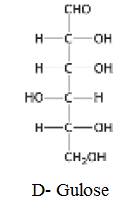
(e)
Interpretation:
The structure of D-Idose: Isomeric at C-2, C-3, and C-4 should be determined.
Concept introduction:
Carbohydrates are a large group of organic compounds that are present in foods, living tissues. These include sugars, cellulose, and starch. These are comprised of hydrogen and oxygen in a similar ratio as in water (2:1). They are usually broken down to release the energy in the animal body. These are of three types: monosaccharides, disaccharides, and polysaccharides.
Answer to Problem 9P
The structure of D-Idose:
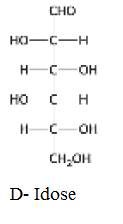
Explanation of Solution
Glucose is an aldose as it contains one aldehyde group per molecule in its acyclic form. Mannose is a sugar of the hexose group. It occurs as a constituent of several natural polysaccharides.
The structure of D-Idose: Isomeric at C-2, C-3, and C-4 is given below:
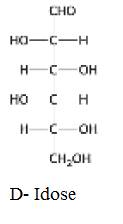
(f)
Interpretation:
The structure of D-Galactose: Epimeric at C-4 should be determined.
Concept introduction:
Carbohydrates are a large group of organic compounds that are present in foods, living tissues. These include sugars, cellulose, and starch. These are comprised of hydrogen and oxygen in a similar ratio as in water (2:1). They are usually broken down to release the energy in the animal body. These are of three types: monosaccharides, disaccharides, and polysaccharides.
Answer to Problem 9P
The structure of D-Galactose:
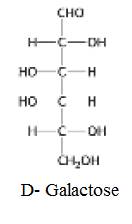
Explanation of Solution
Glucose is an aldose as it contains one aldehyde group per molecule in its acyclic form. When two sugars vary in their configuration around one carbon atom then those sugars are known as epimers of each other.
The structure of D-Galactose: Epimeric at C-4 is given below:
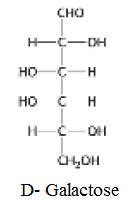
(g)
Interpretation:
The structure of D-Talose: Isomeric at C-2 and C-4 should be determined.
Concept introduction:
Carbohydrates are a large group of organic compounds that are present in foods, living tissues. These include sugars, cellulose, and starch. These are comprised of hydrogen and oxygen in a similar ratio as in water (2:1). They are usually broken down to release the energy in the animal body. These are of three types: monosaccharides, disaccharides, and polysaccharides.
Answer to Problem 9P
The structure of D-Talose:
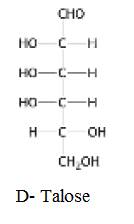
Explanation of Solution
Glucose is an aldose as it contains one aldehyde group per molecule in its acyclic form. When two sugars vary in their configuration around one carbon atom then those sugars are known as epimers of each other.
The structure of D-Talose: Isomeric at C-2 and C-4 is given below:
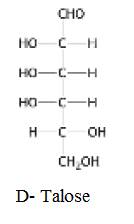
Want to see more full solutions like this?
Chapter 11 Solutions
Biochemistry (Looseleaf)
- 1. Which one is the major organic product obtained from the following aldol condensation? O NaOH, H₂O heat A B C D Earrow_forwardAn organic chemist ordered the wrong item. She wanted to obtain 1-hydroxy-2-butanone, butinstead ordered 2-hydroxybutyraldehyde. As a good biochemist, show how the organic chemistcould use biological catalysis to make her desired compound. Please show the mechanism by drawing.arrow_forwardShow the fate of the hydrogen on carbon-2 of glucose. Please draw out the structure using curve arrows to show electron flow.arrow_forward
- 3. Which one of the compounds below is the major product formed by the reaction sequence shown here? CH3 + CH3NO2 NaOH H2, Ni ? nitromethane acetophenone OH OH HO HN- u x x x x Ph A HO -NH2 HO H Ph Ph Ph N- H B Ph NH2 D Earrow_forward4. Only ONE of the five compounds below can be prepared by an aldol condensation in which a single carbonyl compound is treated with base. Which one is it? To solve this problem, reverse the aldol condensation that formed each of these molecules to find out what two molecules came together to make the products. The one in which the two molecules are identical is the answer. Ph Ph ཚིག གནས ག ནཱ ཀ ན ཀནཱ A Ph H B Ph Ph H D Ph. Ph Ph E Harrow_forward5. Which one is the major organic product obtained from the following reaction sequence? First, equimolar amounts of cyclopentanone and LDA are mixed at -78°C. Then propionaldehyde (propanal) is added. Addition of aqueous acid completes the process. LDA, -78°C. 1. 2. H₂O* H A B H 0 D H H Earrow_forward
- 2. Which one is the major organic product obtained from the following reaction? NaOH, H₂O heat A B C D Earrow_forwardCH3CH2CHO + propanal PhCH2CHO 2-phenylacetaldehyde mixture of four products NaOH 10. In the crossed aldol reaction of propanal and 2-phenylacetaldehyde shown above, a mixture of four products will be formed. Which ONE of the compounds below will NOT be formed in this crossed aldol reaction? OH Ph A H OH OH Ph H B OH OH H H H Ph Ph C Ph D Earrow_forwardAn organic chemist ordered the wrong item. She wanted to obtain 1-hydroxy-2-butanone, butinstead ordered 2-hydroxybutyraldehyde. As a good biochemist, show how the organic chemistcould use biological catalysis to make her desired compound.arrow_forward
- Predict the products of aldolase catalyzing the reaction with acetone and (S)-3-hydroxybutyraldehyde.arrow_forwardA cancer patient undergoing chemotherapy is taking a protein kinase inhibitor drug. The patientis an avid marathon runner and does not want to miss his upcoming race. Is it a good idea forthis patient to attempt a marathon while on this medication? Explain why or why not.arrow_forwardShow the fate of the hydrogen on carbon-2 of glucose.arrow_forward
 BiochemistryBiochemistryISBN:9781305577206Author:Reginald H. Garrett, Charles M. GrishamPublisher:Cengage Learning
BiochemistryBiochemistryISBN:9781305577206Author:Reginald H. Garrett, Charles M. GrishamPublisher:Cengage Learning Biology (MindTap Course List)BiologyISBN:9781337392938Author:Eldra Solomon, Charles Martin, Diana W. Martin, Linda R. BergPublisher:Cengage Learning
Biology (MindTap Course List)BiologyISBN:9781337392938Author:Eldra Solomon, Charles Martin, Diana W. Martin, Linda R. BergPublisher:Cengage Learning Biology: The Dynamic Science (MindTap Course List)BiologyISBN:9781305389892Author:Peter J. Russell, Paul E. Hertz, Beverly McMillanPublisher:Cengage Learning
Biology: The Dynamic Science (MindTap Course List)BiologyISBN:9781305389892Author:Peter J. Russell, Paul E. Hertz, Beverly McMillanPublisher:Cengage Learning Human Heredity: Principles and Issues (MindTap Co...BiologyISBN:9781305251052Author:Michael CummingsPublisher:Cengage Learning
Human Heredity: Principles and Issues (MindTap Co...BiologyISBN:9781305251052Author:Michael CummingsPublisher:Cengage Learning BiochemistryBiochemistryISBN:9781305961135Author:Mary K. Campbell, Shawn O. Farrell, Owen M. McDougalPublisher:Cengage Learning
BiochemistryBiochemistryISBN:9781305961135Author:Mary K. Campbell, Shawn O. Farrell, Owen M. McDougalPublisher:Cengage Learning





